Home & Widgets
The Home tab, formerly Dashboard, is a dynamic tool designed to visualize and monitor data and statistics.
To access Home, click on it on the left sidebar menu.

Home dashboard
Right below HoodEngage’s top navigation bar, in the top left corner there is a name of your dashboard. In the top right corner, there are:
- date / timeframe filters to choose the desired time period for data display;
- filters “by day” and “by month”;
- Edit > Add widget to add widgets to the dashboard;
- the refresh icon to refresh data;
- Settings (the cog icon).

Dashboard settings
Settings allows you to:
- create dashboard;
- edit dashboard (only for custom dashboard can be edited, system dashboards cannot be edited);
- delete dashboard (only custom dashboards can be deleted, system dashboard cannot be deleted);
- set a specific dashboard as default. The dashboard you set as default will be displayed every time you log in to your account and click on the Home tab;
- and switch among the existing dashboards.
Create new dashboard
Click the Settings icon in the top right corner > Create dashboard.

Create new dashboard
Provide name (mandatory), dashboard icon and description (optional).
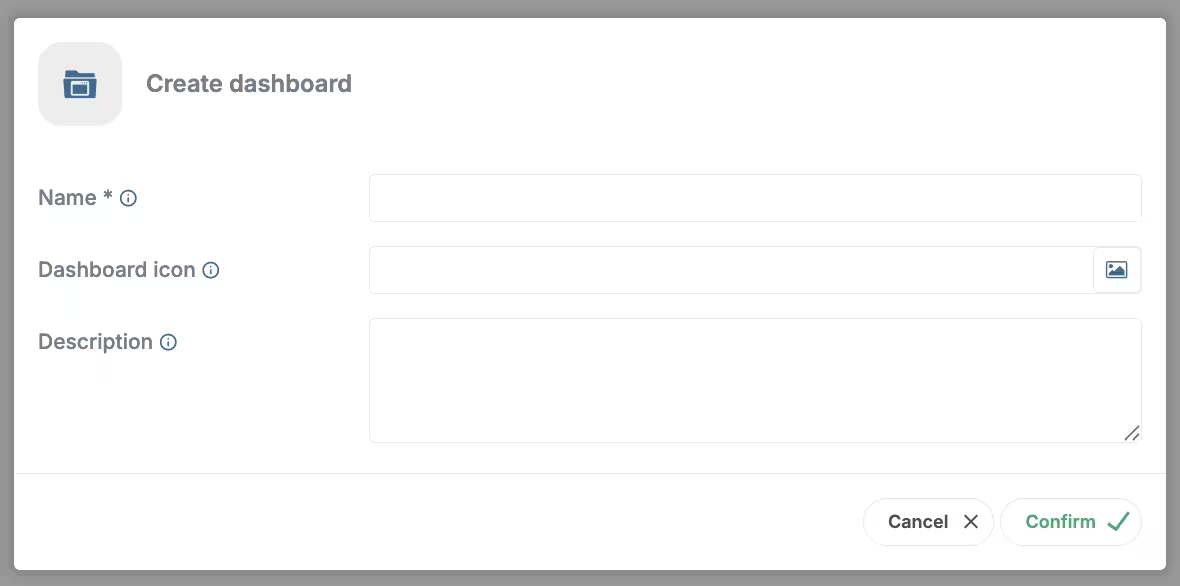
Create new dashboard form
Click Confirm to complete the process.
The new dashboard will be blank, without widgets. You have the flexibility to create, add or remove widgets, and therefore, personalize your HoodEngage experience to your business requirements.
Add widgets
To Add widgets, click on the Edit icon > Add widget in the top right corner.

Add widgets
Here, you will get a list of widgets to add to your dashboard. Scroll down to see all available widgets. Or, search widgets by name (search icon). To add widget to dashboard, click Add widget next to it.

Add widget widget list
Once the widget was added, you can drag the widget to position it anywhere on dashboard, and adjust its shape and frame size by dragging its borders. To delete a widget, click on the Settings icon within the widget, and choose Delete.
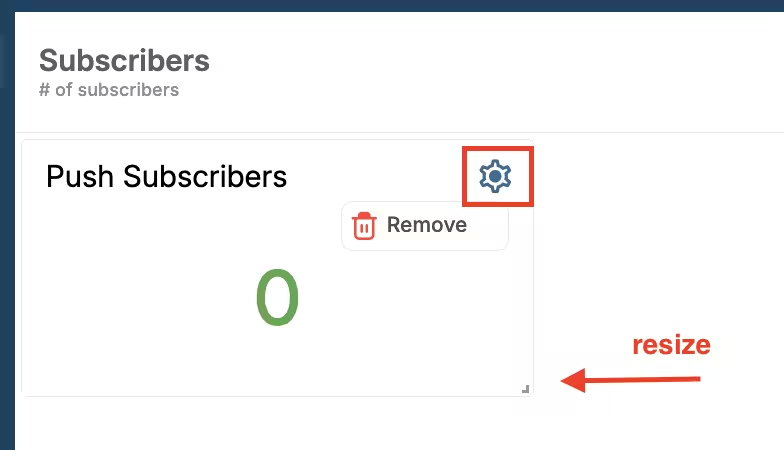
Resize or delete widget
Once you add all widgets, click the Save button in the top right corner to save your dashboard widget preferences.

Save widgets
Create custom widget
To create a custom widget, click on the Create button in the top right corner of the Add widget form.

Create custom widget
Here, you can choose (on the right):
- Widget type: Choose among 5 types of pre-defined widget types.
- Widget name: Give your widget a name (mandatory);
- Widget description: Provide a description for your widget (optional);
- Show legend as: Display data in a list or table form. This option changes depending on the widget type;
- Legend position: Bottom or right;
- Legend value: This option gives you additional options for data customization. Legend Value: Choose from Min, Max, Average, or Total.;
- Compare to: Compare the selected period with Previous Period or Previous Week.
On the left, there are:
- Preview (dynamic);
- Data source: Choose the engine that will run the widget from the available selection in the drop-down menu;
- Filter: Drag and drop filters or click on the Add field button for data customization.
Complete Confirm to complete the process.
Here’s an example of a custom widget on the dashboard.

Custom widget example
Widget Types
There are 5 types of pre-created Widgets.
Timeline
- Show Legend As: Display data in a list or table form.
- Legend Position: Opt for bottom or right-side positioning.
- Legend Value: Choose from Min, Max, Average, or Total.
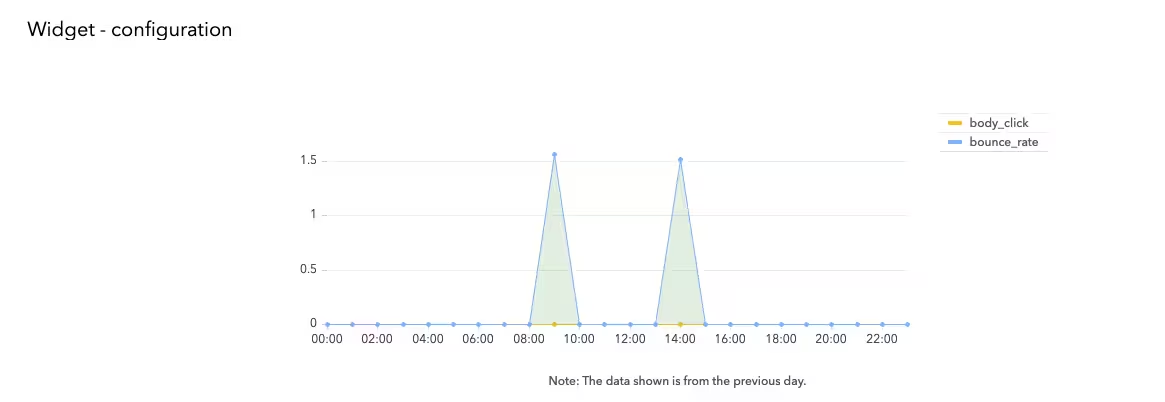
Dashboard timeline widget example
Compare To: Compare the selected period with Previous Period or Previous Week.
Metric
- Sparkline Graph: Choose between None or Area.
- Compare To: Compare the selected period with Previous Period or Previous Week.

Dashboard metric widget example
Table
- Order Field: Sort data by the selected field.
- Order By: Choose sorting order between ascending or descending.
- Show Table With: Select the number of rows to display (5 or 10 rows).

Dashboard table widget example
World map
- Order Field: Sort data by the selected field.
- Order By: Choose sorting order between ascending or descending
- Show Legend With: Define the number of rows to display (5 or 10 rows).
- Show Legend As: Opt for a list or table form.
- Legend Position: Position legend data in relation to the graph (bottom or right).
- Legend Value: Choose data display mode between percent or value.
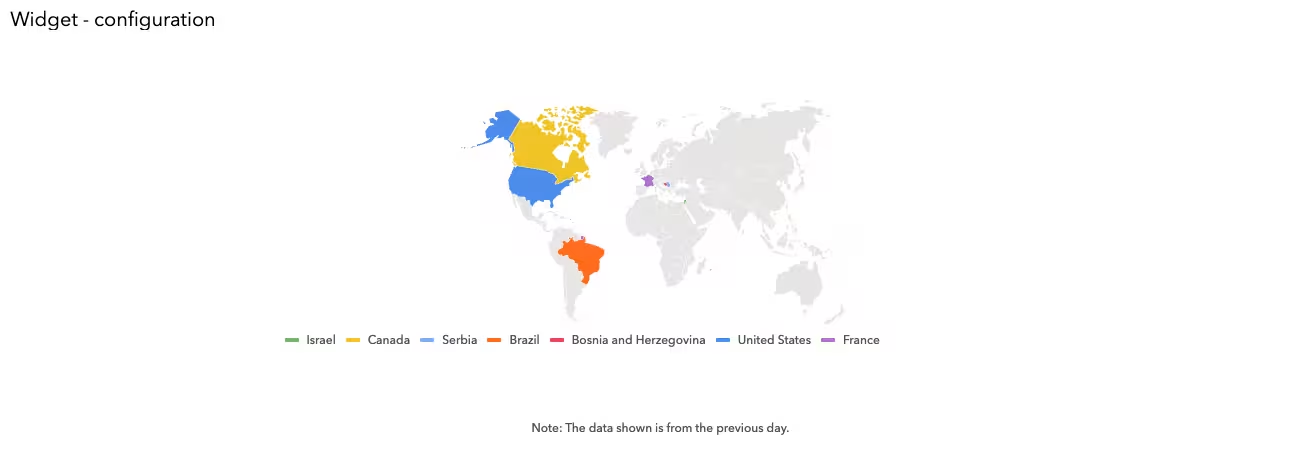
Worldmap widget example
Pie
- Piechart Type: Display data as pie or donut.
- Piechart Labels: Show data based on value, percent, or name.
- Label Position: Display data inside or outside the pie/donut.
- Show Legend As: Choose between a list or table form.
- Legend Position: Position legend data in relation to the pie (bottom or right).
- Legend Value: Choose data display mode between percent or value.
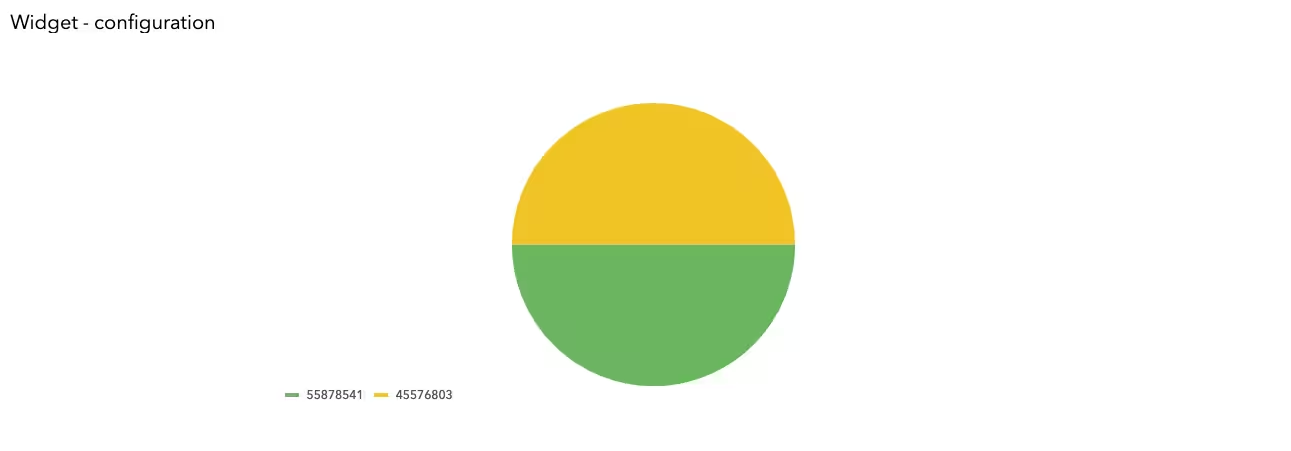
Pie widget example
